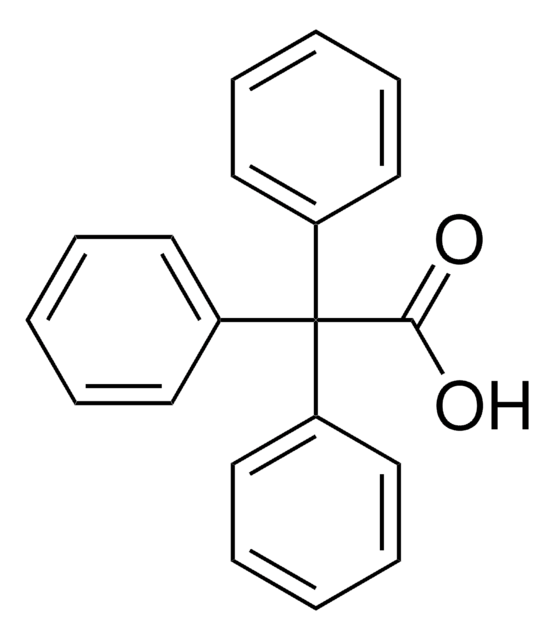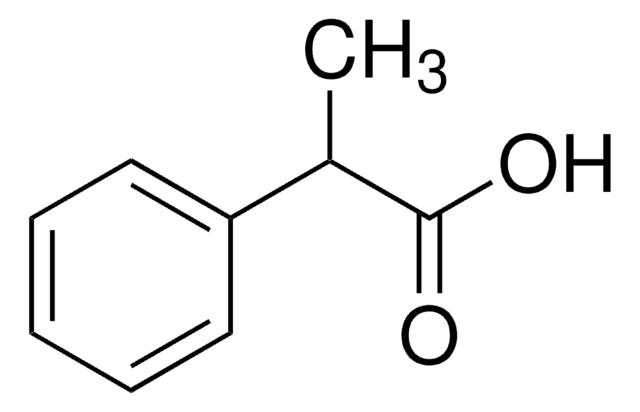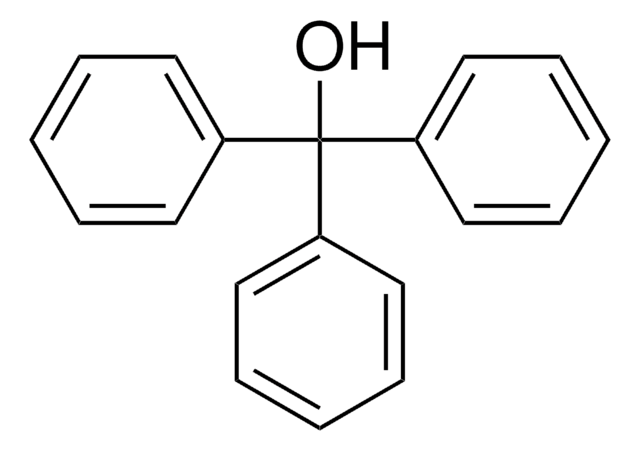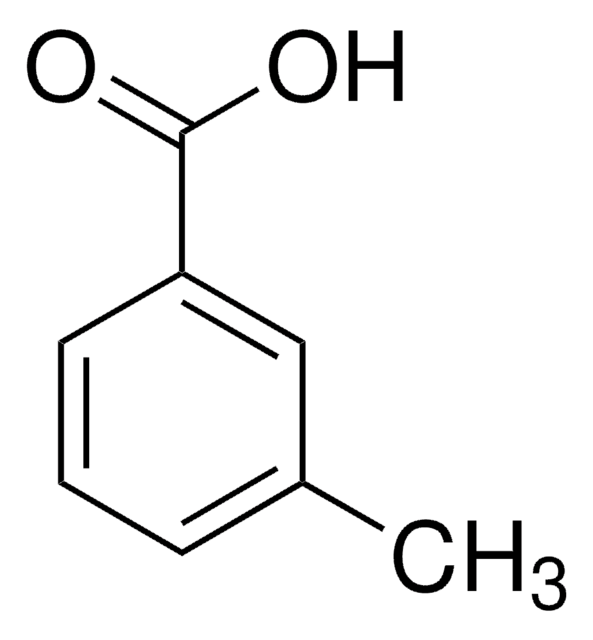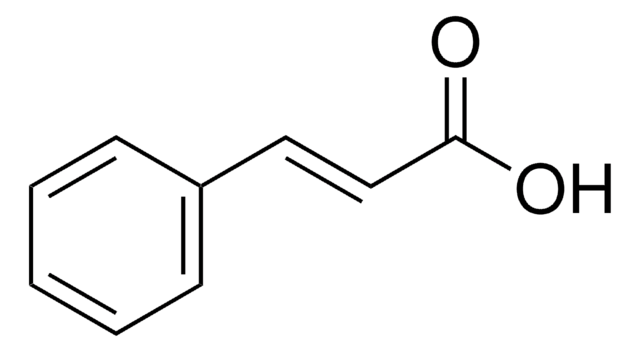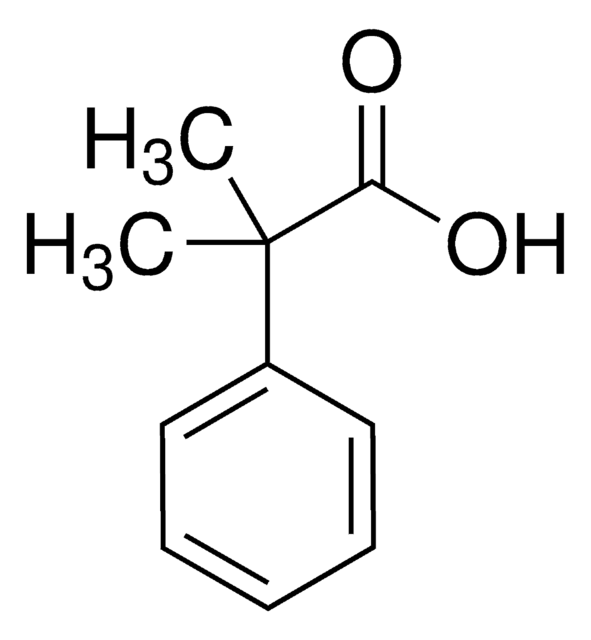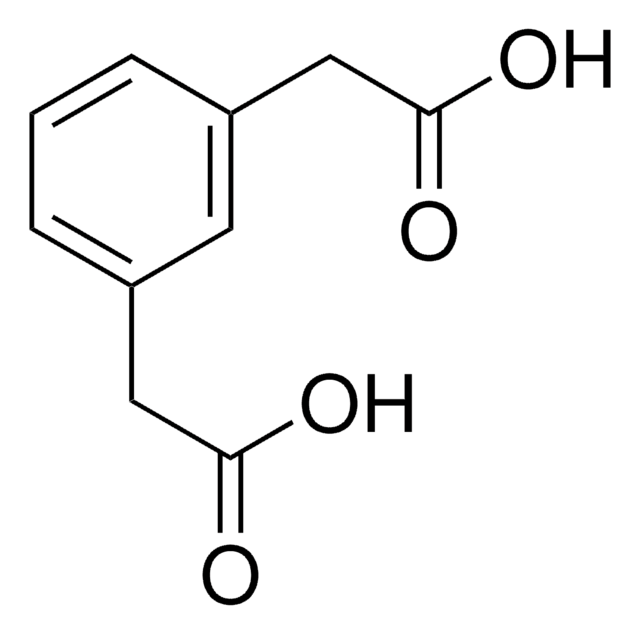256579
3,3,3-Triphenylpropionic acid
97%
Iniciar sesiónpara Ver la Fijación de precios por contrato y de la organización
About This Item
Fórmula lineal:
(C6H5)3CCH2CO2H
Número de CAS:
Peso molecular:
302.37
MDL number:
UNSPSC Code:
12352100
PubChem Substance ID:
NACRES:
NA.22
Productos recomendados
vapor density
10.1 (vs air)
Quality Level
assay
97%
mp
180-182 °C (lit.)
functional group
carboxylic acid
phenyl
SMILES string
OC(=O)CC(c1ccccc1)(c2ccccc2)c3ccccc3
InChI
1S/C21H18O2/c22-20(23)16-21(17-10-4-1-5-11-17,18-12-6-2-7-13-18)19-14-8-3-9-15-19/h1-15H,16H2,(H,22,23)
InChI key
XMSJLUKCGWQAHO-UHFFFAOYSA-N
Categorías relacionadas
General description
Reaction of 3,3,3-triphenylpropionic acid with lead tetraacetate in benzene, acetonitrile or chlorobenzene solution has been investigated.
Application
3,3,3-Triphenylpropionic acid has been used in the preparation of trityl-deprotected aminoalkoxysilane.
signalword
Warning
hcodes
Hazard Classifications
Eye Irrit. 2 - Skin Irrit. 2 - STOT SE 3
target_organs
Respiratory system
Storage Class
11 - Combustible Solids
wgk_germany
WGK 3
flash_point_f
Not applicable
flash_point_c
Not applicable
ppe
dust mask type N95 (US), Eyeshields, Gloves
Elija entre una de las versiones más recientes:
¿Ya tiene este producto?
Encuentre la documentación para los productos que ha comprado recientemente en la Biblioteca de documentos.
Concurrent Carbon-to-Oxygen Rearrangement, Cyclization, and Decarboxylation in the Reaction of 3, 3, 3-Triarylpropionic Acids with Lead Tetraacetate.
Starnes WH.
Journal of the American Chemical Society, 86(24), 5603-5611 (1964)
Spacing and site isolation of amine groups in 3-aminopropyl-grafted silica materials: The role of protecting groups.
Hicks JC, et al.
Chemistry of Materials, 18(21), 5022-5032 (2006)
Quentin Duez et al.
Polymers, 11(4) (2019-04-19)
Several families of polymers possessing various end-groups are characterized by ion mobility mass spectrometry (IMMS). A significant contribution of the end-groups to the ion collision cross section (CCS) is observed, although their role is neglected in current fitting models described
Nuestro equipo de científicos tiene experiencia en todas las áreas de investigación: Ciencias de la vida, Ciencia de los materiales, Síntesis química, Cromatografía, Analítica y muchas otras.
Póngase en contacto con el Servicio técnico